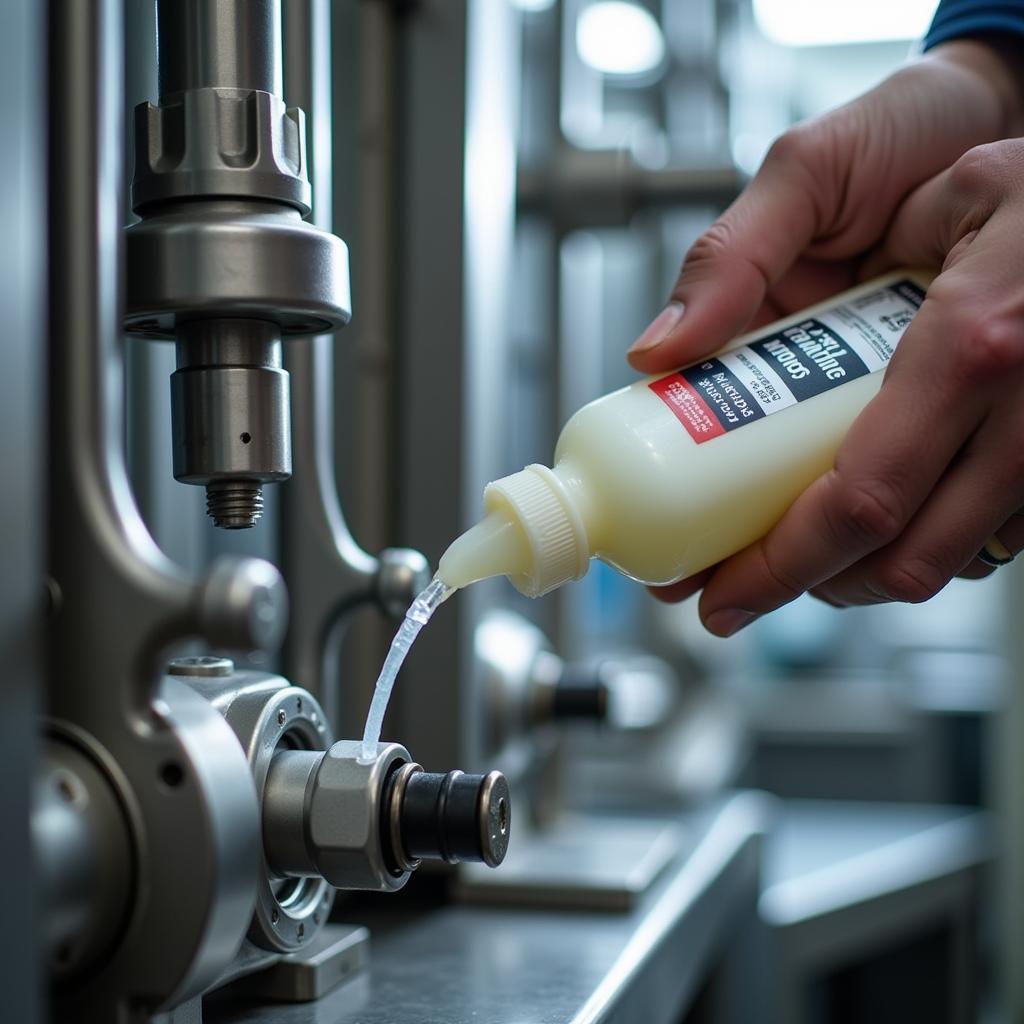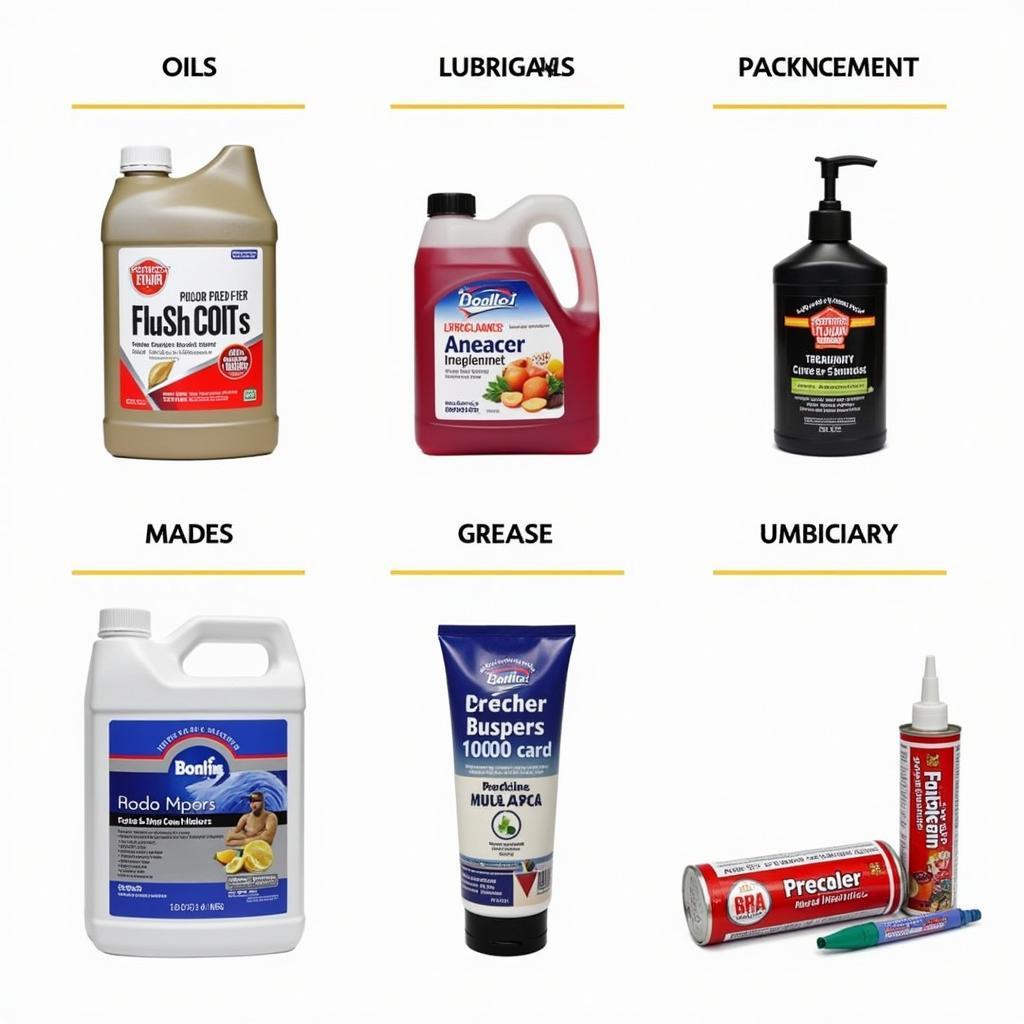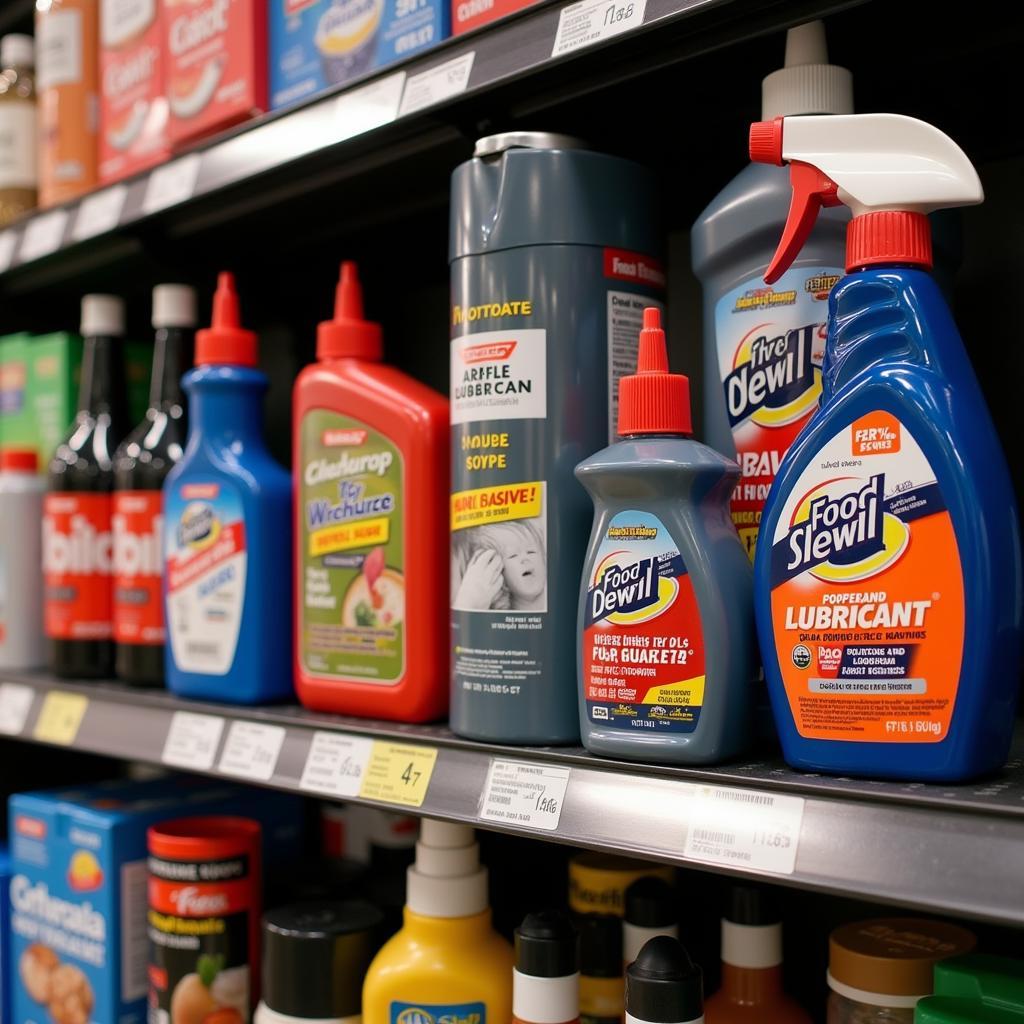Food Grade Lube. It might sound strange at first, but it’s a term that’s becoming increasingly common. Whether you’ve encountered it in a professional setting or stumbled upon it online, you’re probably curious to know more. In this comprehensive guide, we’ll delve into the ins and outs of food grade lube, exploring its uses, safety, and what to look for when choosing the right product.
What is Food Grade Lube?
Food grade lube refers to lubricants that are safe for incidental food contact. This means that while they’re not meant to be eaten, they won’t cause harm if they accidentally come into contact with food during processing, packaging, or handling. These lubricants are typically formulated with ingredients that are approved by regulatory agencies like the FDA for use in food environments.
Why is Food Grade Lube Important?
Imagine a conveyor belt carrying freshly baked bread or a machine packaging your favorite snacks. Now, picture those machines needing lubrication to function smoothly. Using regular lubricants could pose a serious risk of contamination, potentially leading to health hazards and product recalls.
That’s where food grade lube comes in. By utilizing lubricants that are specifically designed for food environments, manufacturers can prioritize both efficiency and safety.
 Food processing equipment
Food processing equipment
Common Uses of Food Grade Lube
Food grade lube isn’t just limited to large-scale manufacturing. Here are some common applications:
- Food Processing Equipment: Lubricating gears, bearings, chains, and other moving parts in machinery used to process, package, and handle food.
- Kitchen Appliances: Maintaining blenders, mixers, food processors, and other appliances used in commercial kitchens.
- Food Packaging: Ensuring smooth operation of packaging equipment and preventing jams or tears in packaging materials.
Types of Food Grade Lubricants
There’s a wide variety of food grade lubricants available, each formulated for specific purposes:
- Oils: Ideal for light-duty lubrication and applications requiring high fluidity.
- Greases: Thicker than oils, greases are suitable for heavy-duty applications and extreme temperatures.
- Dry Lubricants: Provide lubrication without using oil or grease, often in powder or spray form.
 Different types of food grade lubricants
Different types of food grade lubricants
Choosing the Right Food Grade Lube
With so many options, selecting the right food grade lube can feel overwhelming. Here are some key factors to consider:
- Application: What type of equipment or machinery are you lubricating?
- Temperature Range: What temperature extremes will the lubricant be exposed to?
- Water Resistance: Will the lubricant come into contact with water or steam?
- Viscosity: How thick or thin does the lubricant need to be for optimal performance?
“It’s crucial to select a food grade lubricant that aligns with the specific requirements of your application,” advises Dr. Emily Carter, a food safety expert. “Factors such as temperature, water exposure, and the type of machinery all play a role in determining the most suitable lubricant.”
Safety and Regulations
Food grade lubricants are subject to stringent regulations to ensure consumer safety. The FDA has established guidelines and classifications for lubricants used in food environments, typically categorized as H1, H2, and H3:
- H1: Lubricants for incidental food contact.
- H2: Lubricants used in equipment and areas where there’s no possibility of food contact.
- H3: Lubricants based on edible oils, often used for releasing agents.
Always check the lubricant’s label to ensure it meets the necessary safety standards and is appropriate for your intended use.
FAQs
What happens if I accidentally ingest food grade lube?
While food grade lubricants are designed for incidental contact, ingesting large amounts should be avoided. If you experience any adverse reactions, consult a medical professional.
Can I use regular lubricant for my food processing equipment?
Using regular lubricants in food environments can be dangerous and lead to contamination. Always opt for lubricants specifically labeled as “food grade.”
Where can I buy food grade lubricant?
Food grade lubricants are available at specialized industrial suppliers, online retailers, and some restaurant supply stores.
 Food Grade Lubricant Products on a Shelf
Food Grade Lubricant Products on a Shelf
Conclusion
Food grade lube plays a vital role in maintaining the safety and integrity of our food supply. From large-scale production lines to your home kitchen, using the right lubricants ensures that our food remains safe and enjoyable. By understanding the different types of food grade lubricants, their applications, and safety regulations, you can make informed decisions that prioritize both health and quality.
Need assistance? Contact us at Phone Number: 02437655121, Email: minacones@gmail.com Or visit us at: 3PGH+8R9, ĐT70A, thôn Trung, Bắc Từ Liêm, Hà Nội, Việt Nam. Our customer service team is available 24/7 to answer your questions.